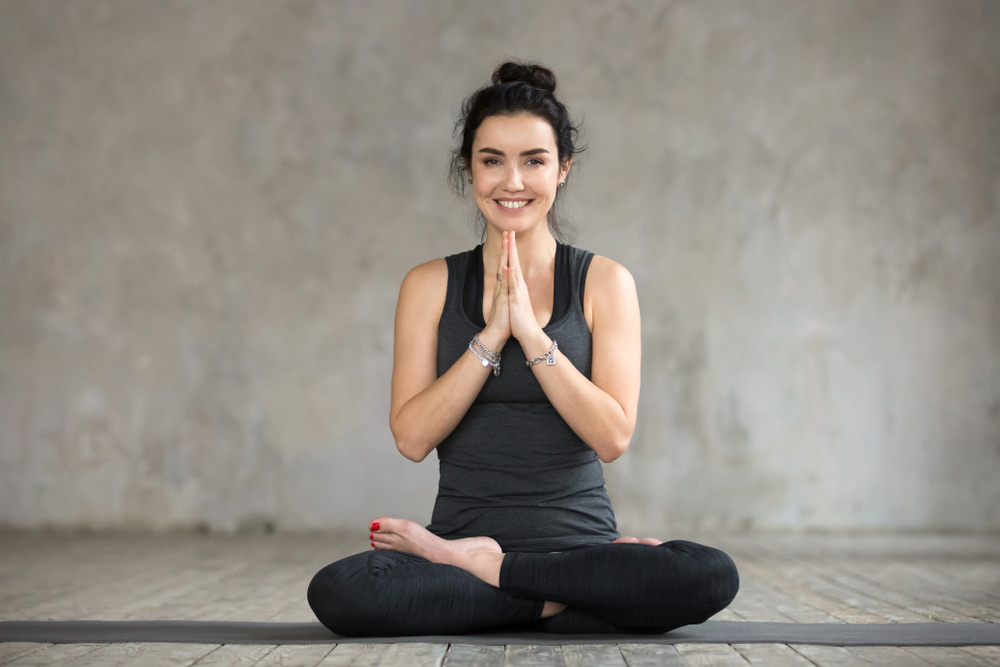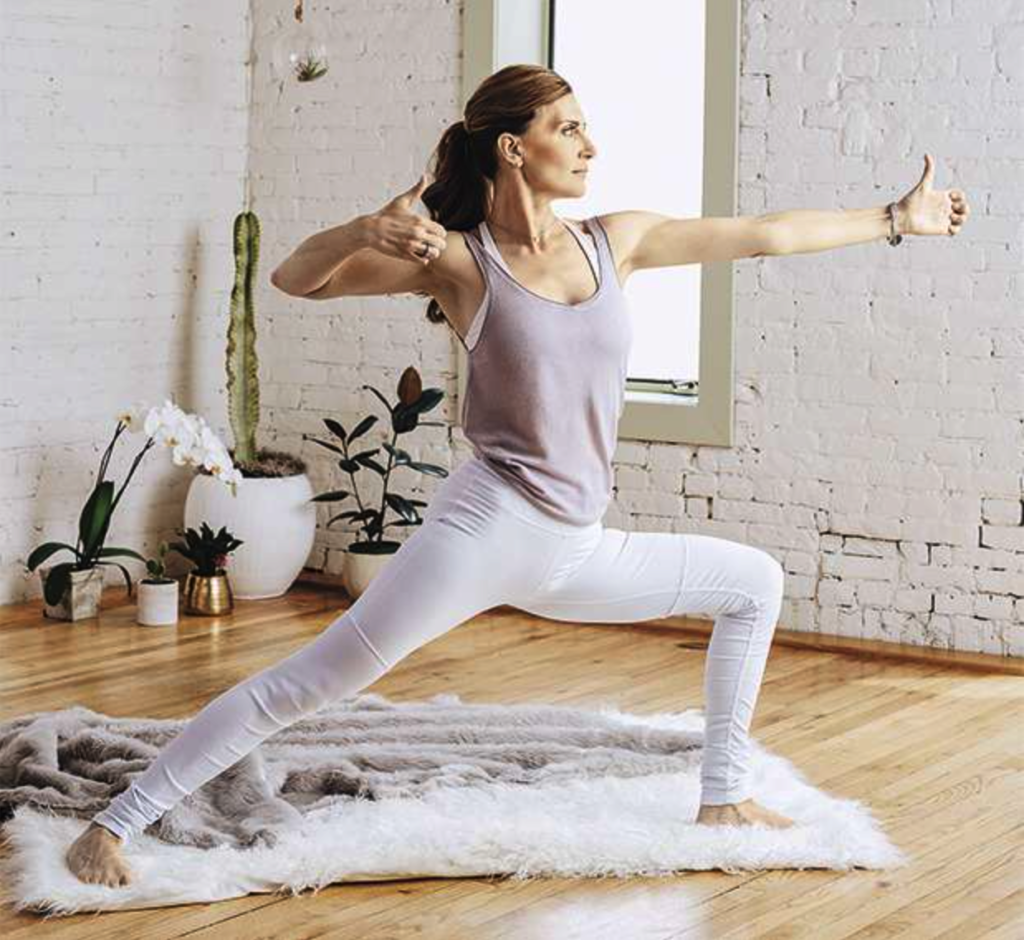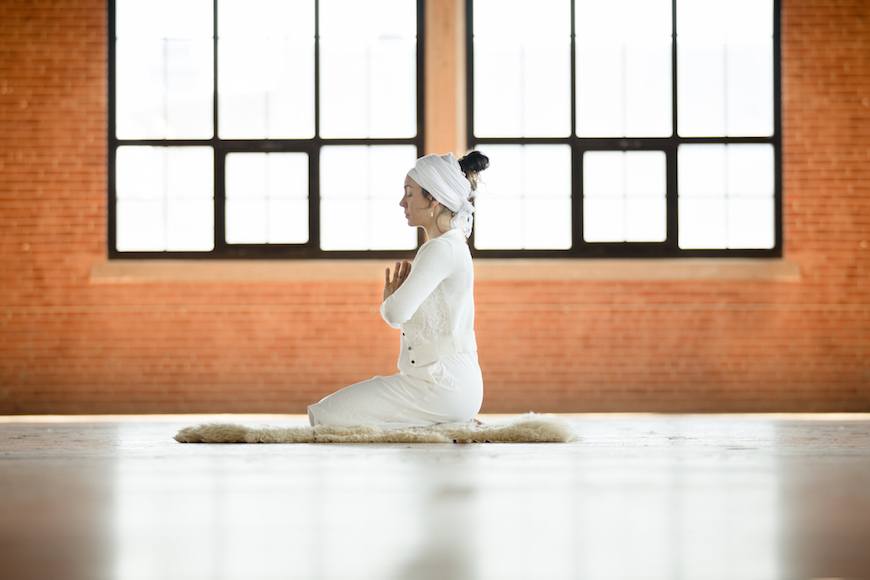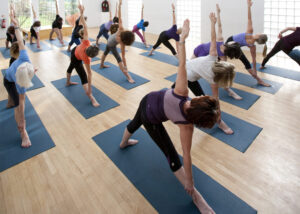Yoga may be fairly new to the western world but it has been practiced for centuries in South Asia – and Kundalini yoga is no different.
In recent years, Kundalini yoga has seen a dramatic rise in popularity due to its adoption by celebrities. However, many of these people are just practicing Kundalini yoga in name only and they are not actually utilizing proper techniques.
Are you curious about the true meaning behind Kundalini yoga? Do you want to know the benefits of Kundalini yoga and how to practice it the correct way?
Read on to find the answers to all of these questions and more!
What Is Kundalini Yoga?
For Kundalini yoga the meaning is right there in the name, it is primarily concerned with helping you activate your Kundalini energy. However, that leads us to another question – what is Kundalini energy?
The term Kundalini refers to your life force energy. Everyone has this energy, regardless of if they practice yoga or not. However, if someone is unawakened, this energy remains dormant in a sense and is coiled at the base of their spine. If you manage to awaken this energy, it spirals upwards, activating your chakras and moving you further on the path to enlightenment. This serpentine depiction of this life force energy is not a coincidence. “Kundalini” is a term that comes from the Sanskrit word “kundal” which can refer to “circular” or a “coiled snake”.
In its unawakened state Kundalini energy is exactly like a coiled snake, unaroused and resting. However, once it is awakened, it stretches up along your spine and activates your chakras. Our chakras are vital points and yoga is centered around balancing and activating them. The seven chakras include:
- root chakra
- sacral chakra
- naval chakra
- heart chakra
- throat chakra
- third eye chakra
- crown chakra
Short History
Kundalini yoga has been practiced in India and other parts of South Asia for centuries; however, that being said its origins are somewhat difficult to pinpoint. The concept of Kundalini energy is definitely older than Kundalini yoga since mentions of this energy have been found in ancient Vedic texts from 1,000 B.C.
In a contemporary sense, Kundalini yoga is often associated with Yogi Bhajan – although he is not its creator – a yoga practitioner and teacher from Pakistan. He is largely responsible for the surge of popularity that Kundalini yoga has experienced in the west.
Comparing Kundalini Yoga To Other Popular Types Of Yoga
To the uninitiated, the differences between the various types of yoga out there might not be particularly obvious. Many people that are not familiar with yoga often view these practices as being the same with the only difference being the movements that a person performs. However, yoga poses (like cobra or lotus) or movements are only one aspect of yoga. In addition to this, the various types of yoga that are out there can be compared in a wide variety of ways.
The most distinctive facet of Kundalini yoga is that it is first and foremost a spiritual practice. This statement may be a little confusing if you are familiar with the underlying concepts of yoga because as you know, all yoga is inherently spiritual. However, in Kundalini yoga this spiritual aspect is the foundation and the central focus throughout the entire process.
Nevertheless, be that as it may, Kundalini yoga does still make use of poses and physical movements. They just serve to accentuate the spiritual practices of Kundalini yoga. As a result of this, many contemporary practitioners view Kundalini yoga as a contrast to vinyasa yoga or hatha yoga, since these place a heavy focus on poses.
Overall, Kundalini yoga makes an effort to exemplify the importance of precision and repetition. It does have a strong connection to your breath but it also allows for singing, chanting, and ancillary movements.
The Components Of Kundalini Yoga
So, now we understand the history of Kundalini yoga and also what makes it different, it is time to look at its practical aspects.
In practice, virtually all types of yoga are centered around carrying out actions and performing techniques in a set manner. Therefore it is safe to assume that Kundalini yoga is no different in this regard. At a very fundamental level, Kundalini yoga can be broken down into six primary components or sequences. If you want to practice it properly and want to get the best results, these Kundalini yoga sequences need to be carried out in the following order:
- An opening chant is the first thing that should be done in every Kundalini yoga routine or class. Some yogis refer to this opening chant as the act of “tuning in”.
- Pranayama refers to the breathing exercises that are used as a preliminary activity to the postures, meditation, etc. However, this is not just a warmup step, it also helps you to practice your breath control.
- Kriya is a term that refers to the overall sequence of hand position (mudras), postures, meditation, sounds, and pranayama. The intensity and length of the kriya can vary depending on your skill level and stamina.
- Relaxation gives both your mind and body the opportunity to fully take in the effects of the kriya.
- Meditation is a separate step from relaxation because it is an active process that facilitates your ability to cultivate awareness.
- A closing chant ends every Kundalini yoga session, just as the opening chant began it.
These six steps are extremely easy to follow and can serve as the framework for any Kundalini yoga routine. However, if you’re a beginner, you probably need more in-depth guidance when it comes to Kundalini yoga poses. Don’t worry, we’ve got you covered.
Getting Started With Kundalini Yoga: Beginner Friendly Poses To Practice
More often than not, beginners that are interested in Kundalini yoga will misguidedly assume that they need to master specific poses for this type of yoga. However, this is simply not the case.
If you are an experienced enough yogi, then you should be able to adapt virtually any pose into your Kundalini yoga routine. Nevertheless, if you’re still unsure of where to start as far as poses are concerned, here are some beginner-friendly poses that can help.

Lotus Pose
Lotus is widely regarded as the stereotypical pose for meditation or yoga, even people who know nothing about yoga can recognize this pose. However, this doesn’t mean that it isn’t a good pose for Kundalini yoga. It is one of the best Kundalini yoga poses for beginners because of how easy it is to grasp.
Step-by-Step Instructions
Standing Archer pose
The Standing Archer Pose isn’t as iconic as the lotus pose but it is still a great option for beginners – especially if you are practicing Kundalini yoga.
Step-by-Step Instructions
Cobra Pose
Cobra is another popular pose that is easy to perform and is also perfect for Kundalini yoga.
Step-by-Step InstructionsDefinitive Benefits Of Kundalini Yoga
Kundalini Yoga has a wide array of benefits, here are some of the notable ones:
- Better Self-Perception
Kundalini yoga has long been touted as being a means of improving a person’s self-appreciation. This fact has also been supported by a 2017 study that was conducted by the U.S. Department of Agriculture.
Kundalini yoga is great for people that are looking for a way to foster body positivity and improve their self-acceptance. It is especially ideal for individuals that are dealing with anorexia nervosa and bulimia nervosa.
- Relieves Stress And Anxiety
Stress relief is one of the primary benefits of all types of yoga but Kundalini yoga is specifically targeted towards relieving these issues.
In fact, a study from 2018 concluded that Kundalini yoga was effective at lowering anxiety levels. Furthermore, since there are no negative repercussions, it is recommended as a treatment option for individuals with generalized anxiety disorder.
- Spiritual Enlightenment
For centuries, Kundalini yoga has been linked with the concept of spiritual enlightenment. Some of the benefits that individuals may experience in this regard are; increased creativity, boosted energy, more empathy, and internal peace.
Final Thoughts
More traditional types of yoga place a stronger focus on the flow of the breath, whereas Kundalini yoga puts emphasis on breathing in specific patterns. This is an important distinction to make, even if both of these concepts are very similar on the surface. Kundalini yoga leans more heavily into the spiritual side of things – which is made clear because its primary goal is to foster spiritual enlightenment. However that being said, research has shown that Kundalini yoga does have several medical benefits that are backed by contemporary science.
Last but not least, although Kundalini yoga is remarkably beneficial, you should still be aware of your personal safety and health before practicing it. Take proper precautions and consult a medical professional before you practice Kundalini yoga if you: are pregnant, have breathing issues, have an injury or joint pain.
If you think that Kundalini yoga is right (and safe) for you, then go forth – awaken your energy, be enlightened!







